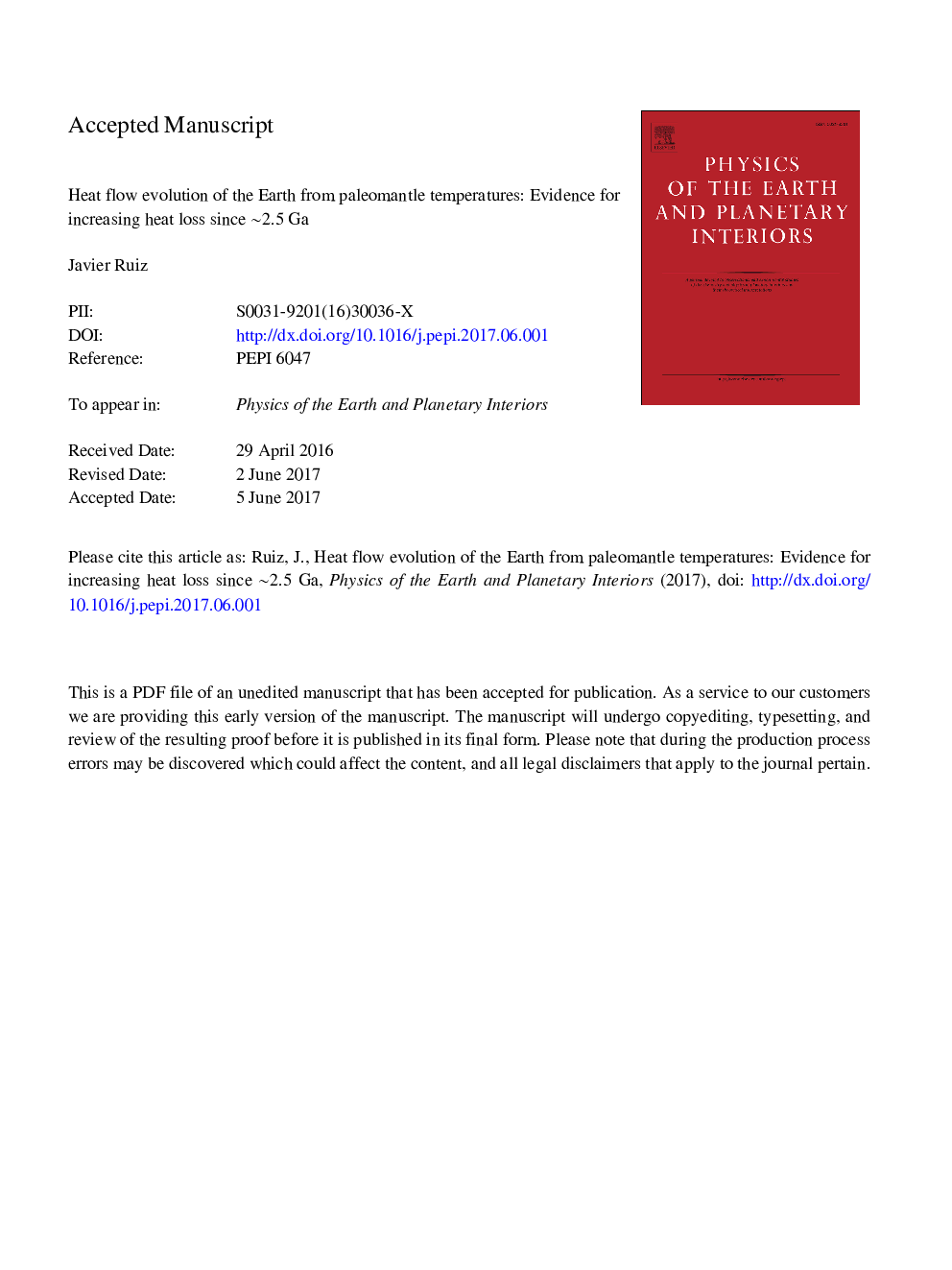| Article ID | Journal | Published Year | Pages | File Type |
|---|---|---|---|---|
| 5787306 | Physics of the Earth and Planetary Interiors | 2017 | 36 Pages |
Abstract
Earth currently loses two to five times as much heat through its surface as it is internally produced by radioactivity. This proportion cannot be extrapolated into the past, because it would imply high interior temperatures and catastrophic melting of the planet in ancient times. The heat loss evolution of the Earth cannot therefore be described by a constant heat flow decreasing. This is consistent with previous work finding that the mantle heated up until â¼2.5-3.0Â Ga and then progressively cooled down. The present work derives a first-order heat loss evolution of the Earth by comparing the evolution of the total heat content of the silicate Earth (as described by mantle potential temperatures deduced from the melting conditions of ancient non-arc basalts) with the total radioactive heat production. The results show that the heat flow was declining, and the mantle heating-up, until â¼2.5Â Ga, but that after this time the heat flow has been slowly (but constantly) increasing, and the mantle cooling-down, until the present-day. The change in heat loss trend is roughly coeval with other major geological, geochemical and environmental changes, and could indicate the starting of the modern-style of plate tectonics. This work provides therefore the first quantitative evidence of change in terrestrial heat loss regime, and suggests that substantial variations in the internal heat budget occurred during Earth's history.
Related Topics
Physical Sciences and Engineering
Earth and Planetary Sciences
Geophysics
Authors
Javier Ruiz,
